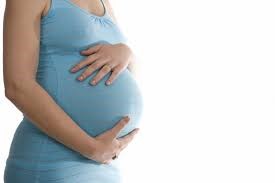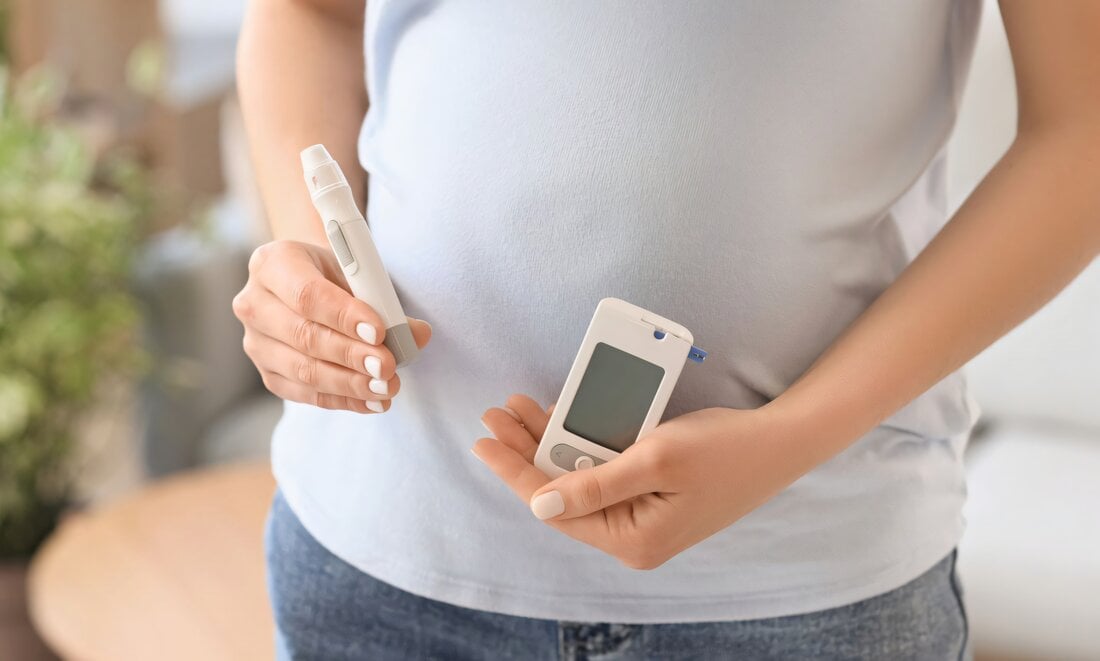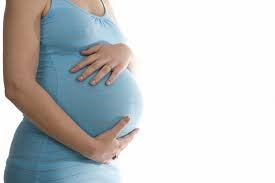Pregnancy
5/5 – (1 vote) Pregnancy – the nine months or so for which a woman carries a developing embryo and fetus in her womb – is for most women a time of great happiness and fulfillment. However, during pregnancy, both the woman and her developing child face various health risks. For this reason, it is […]

Pregnancy – the nine months or so for which a woman carries a developing embryo and fetus in her womb – is for most women a time of great happiness and fulfillment. However, during pregnancy, both the woman and her developing child face various health risks. For this reason, it is important that all pregnancies should be monitored by skilled care providers.
- General information:
a, Maternal mortality
Key facts
- Every day, approximately 830 women die from preventable causes related to pregnancy and childbirth.
- 99% of all maternal deaths occur in developing countries.
- Maternal mortality is higher in women living in rural areas and among poorer communities.
- Young adolescents face a higher risk of complications and death as a result of pregnancy than other women.
- Skilled care before, during and after childbirth can save the lives of women and newborn babies.
- Between 1990 and 2015, maternal mortality worldwide dropped by about 44%.
- Between 2016 and 2030, as part of the Sustainable Development Goals, the target is to reduce the global maternal mortality ratio to less than 70 per 100 000 live births.
Maternal mortality is unacceptably high. About 830 women die from pregnancy- or childbirth-related complications around the world every day. It was estimated that in 2015, roughly 303 000 women died during and following pregnancy and childbirth. Almost all of these deaths occurred in low-resource settings, and most could have been prevented.1
In sub-Saharan Africa, a number of countries halved their levels of maternal mortality since 1990. In other regions, including Asia and North Africa, even greater headway was made. Between 1990 and 2015, the global maternal mortality ratio (the number of maternal deaths per 100 000 live births) declined by only 2.3% per year between 1990 and 2015. However, increased rates of accelerated decline in maternal mortality were observed from 2000 onwards. In some countries, annual declines in maternal mortality between 2000–2010 were above 5.5%.
The Sustainable Development Goals and the Global Strategy for Women’s, Children’s and Adolescents’ Health
Seeing that it is possible to accelerate the decline, countries have now united behind a new target to reduce maternal mortality even further. One target under Sustainable Development Goal 3 is to reduce the global maternal mortality ratio to less than 70 per 100 000 births, with no country having a maternal mortality rate of more than twice the global average.
Where do maternal deaths occur?
The high number of maternal deaths in some areas of the world reflects inequities in access to health services, and highlights the gap between rich and poor. Almost all maternal deaths (99%) occur in developing countries. More than half of these deaths occur in sub-Saharan Africa and almost one third occur in South Asia. More than half of maternal deaths occur in fragile and humanitarian settings.
The maternal mortality ratio in developing countries in 2015 is 239 per 100 000 live births versus 12 per 100 000 live births in developed countries. There are large disparities between countries, but also within countries, and between women with high and low income and those women living in rural versus urban areas.
The risk of maternal mortality is highest for adolescent girls under 15 years old and complications in pregnancy and childbirth is a leading cause of death among adolescent girls in developing countries.
Women in developing countries have, on average, many more pregnancies than women in developed countries, and their lifetime risk of death due to pregnancy is higher. A woman’s lifetime risk of maternal death – the probability that a 15 year old woman will eventually die from a maternal cause – is 1 in 4900 in developed countries, versus 1 in 180 in developing countries. In countries designated as fragile states, the risk is 1 in 54; showing the consequences from breakdowns in health systems.
Why do women die?
Women die as a result of complications during and following pregnancy and childbirth. Most of these complications develop during pregnancy and most are preventable or treatable. Other complications may exist before pregnancy but are worsened during pregnancy, especially if not managed as part of the woman’s care. The major complications that account for nearly 75% of all maternal deaths are:
- Severe bleeding (mostly bleeding after childbirth)
- Infections (usually after childbirth)
- High blood pressure during pregnancy (pre-eclampsia and eclampsia)
- Complications from delivery
- Unsafe abortion.
The remainder are caused by or associated with diseases such as malaria, and AIDS during pregnancy.
How can women’s lives be saved?
Most maternal deaths are preventable, as the health-care solutions to prevent or manage complications are well known. All women need access to antenatal care in pregnancy, skilled care during childbirth, and care and support in the weeks after childbirth. Maternal health and newborn health are closely linked. It was estimated that approximately 2.7 million newborn babies died in 2015, and an additional 2.6 million are stillborn. It is particularly important that all births are attended by skilled health professionals, as timely management and treatment can make the difference between life and death for both the mother and the baby.
Severe bleeding after birth can kill a healthy woman within hours if she is unattended. Injecting oxytocin immediately after childbirth effectively reduces the risk of bleeding.
Infection after childbirth can be eliminated if good hygiene is practiced and if early signs of infection are recognized and treated in a timely manner.
Pre-eclampsia should be detected and appropriately managed before the onset of convulsions (eclampsia) and other life-threatening complications. Administering drugs such as magnesium sulfate for pre-eclampsia can lower a woman’s risk of developing eclampsia.
To avoid maternal deaths, it is also vital to prevent unwanted and too-early pregnancies. All women, including adolescents, need access to contraception, safe abortion services to the full extent of the law, and quality post-abortion care.
Why do women not get the care they need?
Poor women in remote areas are the least likely to receive adequate health care. This is especially true for regions with low numbers of skilled health workers, such as sub-Saharan Africa and South Asia. Globally in 2015, births in the richest 20 per cent of households were more than twice as likely to be attended by skilled health personnel as those in the poorest 20 per cent of households (89 per cent versus 43 per cent). This means that millions of births are not assisted by a midwife, a doctor or a trained nurse.
In high-income countries, virtually all women have at least four antenatal care visits, are attended by a skilled health worker during childbirth and receive postpartum care. In 2015, only 40% of all pregnant women in low-income countries had the recommended antenatal care visits.
Other factors that prevent women from receiving or seeking care during pregnancy and childbirth are:
- Poverty
- Distance
- Lack of information
- Inadequate services
- Cultural practices.
To improve maternal health, barriers that limit access to quality maternal health services must be identified and addressed at all levels of the health system.
Adolescent pregnancy
Key facts
- About 16 million girls aged 15 to 19 and some 1 million girls under 15 give birth every year—most in low- and middle-income countries.
- Complications during pregnancy and childbirth are the second cause of death for 15-19 year-old girls globally.
- Every year, some 3 million girls aged 15 to 19 undergo unsafe abortions.
- Babies born to adolescent mothers face a substantially higher risk of dying than those born to women aged 20 to 24.
Birth rates
There has been a marked, although uneven, decrease in the birth rates among adolescent girls since 1990, but some 11% of all births worldwide are still to girls aged 15 to 19 years old. The vast majority of these births (95%) occur in low- and middle-income countries.
The 2014 World Health Statistics indicate that the average global birth rate among 15 to 19 year olds is 49 per 1000 girls. Country rates range from 1 to 299 births per 1000 girls, with the highest rates in sub-Saharan Africa.
Adolescent pregnancy remains a major contributor to maternal and child mortality, and to the cycle of ill-health and poverty.
Contexts
For some adolescents, pregnancy and childbirth are planned and wanted, but for many they are not. Adolescent pregnancies are more likely in poor, uneducated and rural communities. In some countries, becoming pregnant outside marriage is not uncommon. By contrast, some girls may face social pressure to marry and, once married, to have children. More than 30% of girls in low- and middle-income countries marry before they are 18; around 14% before they are 15.
Some girls do not know how to avoid getting pregnant: sex education is lacking in many countries. They may feel too inhibited or ashamed to seek contraception services; contraceptives may be too expensive or not widely or legally available. Even when contraceptives are widely available, sexually active adolescent girls are less likely to use them than adults. Girls may be unable to refuse unwanted sex or resist coerced sex, which tends to be unprotected.
Health effects
Pregnancy and childbirth complications are the second cause of death among 15 to 19 year olds globally. However, there have been significant drops in the number of deaths in all regions since 2000, most notably in South-East Asia where mortality rates fell from 21 to 9 per 100 000 girls. Some 3 million unsafe abortions among girls aged 15 to 19 take place each year, contributing to maternal deaths and to lasting health problems.
Early childbearing increases the risks for both mothers and their newborns. In low- and middle-income countries, babies born to mothers under 20 years of age face a 50% higher risk of being still born or dying in the first few weeks versus those born to mothers aged 20-29. The younger the mother, the greater the risk to the baby. Newborns born to adolescent mothers are also more likely to have low birth weight, with the risk of long-term effects.
Economic and social consequences
Adolescent pregnancy can also have negative social and economic effects on girls, their families and communities. Many girls who become pregnant have to drop out of school. A girl with little or no education has fewer skills and opportunities to find a job. This can also have an economic cost with a country losing out on the annual income a young woman would have earned over her lifetime, if she had not had an early pregnancy.
Source WHO
[:]













